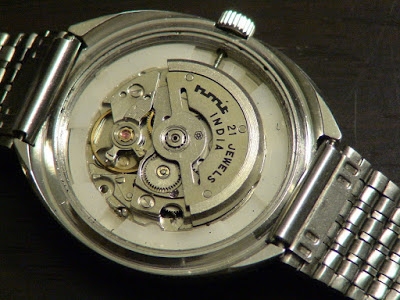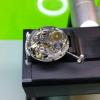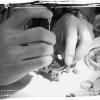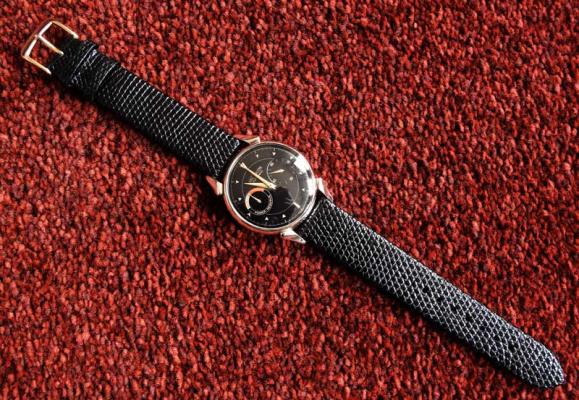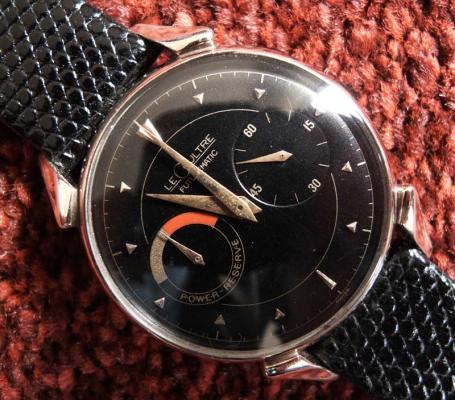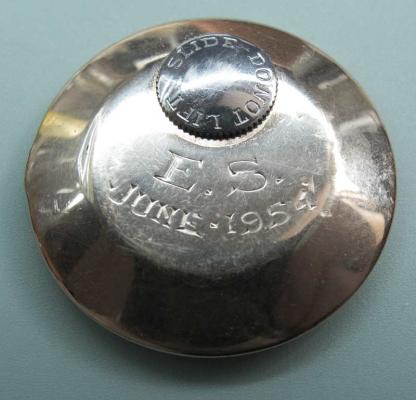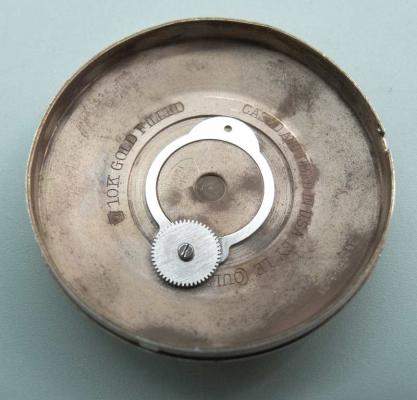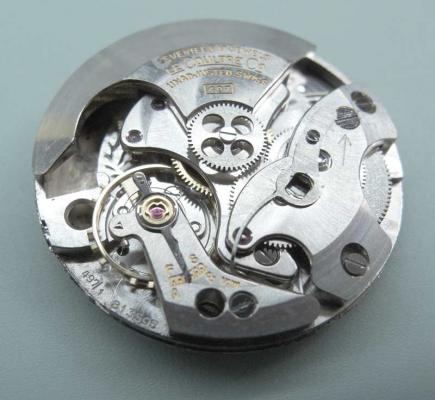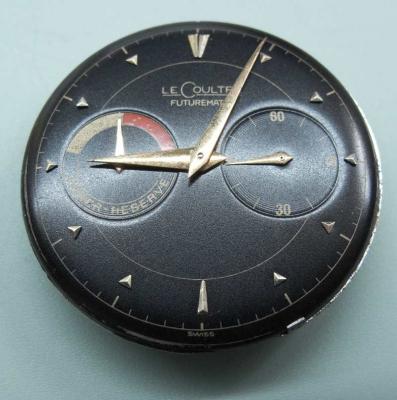Leaderboard
Popular Content
Showing content with the highest reputation on 08/06/15 in all areas
-
Hello Sendi, I am led by your description of the fault to the automatic wind system. With the back off check the movement on the oscillating weight. If the weight is not turning freely then that is the problem. It is unlikely to be catching the case as in general these movements are much smaller than the case. There is a ball race that sometimes causes problems and if that is faulty or dirty will have an effect. When you gently move the weight the wheel just below centre should turn and that transfers to the spring, if it does not turn there is a problem between the two. If none of the aformentioned is at fault, It is really a case of removing the bits of the auto winding mechanism one by one checking as you go to see everything meshes correctly and all the teeth are ok. Good Luck, Vic3 points
-
For me it comes down to contamination and not deterioration, (after all most oils have a shelf life of 5 or 6 years if they are fresh so they're not going to go off in the pot), and therefore how many watches I have done and how long the lid has been off the pot. Someone earning a living at servicing and repairing watches could well have the oil pot opening and closing all day every day. Each time it is opened there is an opportunity for microscopic airborne particles to settle in the oil and by the end of the week the oil would merit changing. My own habit as an amateur tends to be a bit sporadic depending on my work demands, so there are times when I get to do several watches in quick succession, and times when I don't get to touch a screw driver for weeks :( so like Geo I will assess the oil in the pot every time. I do only put out very small amounts in the pot so when I get busy I tend to use it up before throwing it. If you cleaned and replenished your pots a couple of months ago and the lids have remained in place ever since then I would go with what is in the pots, it should still be as clean as the day it went in.2 points
-
Hi Guys, If any of you is looking for source of oil stone paste for polishing here is link: http://watchparts24.de/Natural-oil-stone-whet-stone-powder-Arkansas-powder-30gr Is it hard to find and they have it in stock - I was looking for it for some time :). Rafal1 point
-
Greetings! Just joined the forum and completed my first ever overhaul. It's a little vintage Waltham mechanical, circa 1960's to my understanding. Certainly nothing very valuable dollar-wise, but being my first successful overhaul I'm proud of it. :-) When it arrived the old oil had it so gunked up nothing would even move. A good thorough cleaning and a little fresh oil and she's ticking beautifully! Sent from my iPod touch using Tapatalk1 point
-
Hi, I am new to this forum, so if I have posted in the incorrect section my apologies and please feel free to direct me elsewhere.. I am looking for a local reputable watch repair service (independant or national business), I live in Halifax, West Yorkshire UK. I have two watches that I am looking for help with: 1) Fossil watch (similar in appearance to this) the pin has snapped and the small spring section which goes watch body is still in place. I believe it may need to be drilled out? Other wise the strap and watch is in perfect working order. 2) Emporio Armani watch (similar in appearance to this) I have had the watch sometime and I now need a new link adding back in, but I am not able to find the link. Can new links be obtained, or must the strap be replaced? (The strap looks the same as this). Thank you in advance. Gareth1 point
-
1 point
-
1 point
-
Now that's an interesting piece Stephen, the name is almost as sophisticated as the movement inside. At first I thought it was a really old clock, but the heavy use of circlips on the shafts suggest otherwise. I like all your coloured timing marks! :)1 point
-
Yes - it is indeed best practice to clean the oil pots out once a week or sooner if you notice dust contamination, I know some watch repairers who clean the pots out every day.1 point
-
I only clean out my oil pots if I notice contamination of any sort in them. I do check thoroughly with a loupe each time before lubricating a movement.1 point
-
I would wrap that in white paper for the following reasons.. 1.Helps parts to stand out. I found it difficult to spot some metal parts against the dark background. 2.Prevents parts from getting into the crevices. 3.Once a part sticks to the magnet, it is quite difficult to pry it off, imagine trying to pull a click spring, for instance, off that magnet. Paper will have some give to it, allowing you to get your tweezer under the magnet. Apart from that, keep it away from other watch stuff (mine stays on the floor) and have a demagnetiser handy! Anil Anil1 point
-
1 point
-
Hi Mike, I've found that the regulars here are always ready with help and encouragement. If you're into mechanical things, it's a slippery but enjoyable slope. Steve1 point
-
I felt sick just looking at it. It may be the dial, or the half bottle of vodka I had earlier☺ Sent from my Lenovo TAB S8-50F using Tapatalk1 point
-
I can't see any problem with that. On speedmaster as an example. There are both straight hand and hands with a arrow or dot lume on the end. That must weight more than the straight one . Now problems with that. Go for it. Show us some lume shots when it's done.1 point
-
1 point
-
Both are a matter of the hairspring not following the path of the regulator. When you move the regulator, the regulator pin is pushing the hairspring out of the center which causes the beat error to change. Sent from my iPad using Tapatalk1 point
-
Marc WRT Addict Member 306 posts LocationNorthampton, England Posted 22 April 2015 - 10:44 PM cdjswiss, on 22 Apr 2015 - 7:43 PM, said: I think I'm right in saying that if the hair spring coils are properly concentric and the terminal curve (the bit that goes through the arc made by the regulator curb pins) is circular rather than spiral, the moving the regulator shouldn't introduce any beat error. If the regulator curb pins impinge on the spiral part of the hair spring, or if the terminal arc of the spring is not circular, then as you move the regulator the curb pins will interfere with the concentricity of the hair spring which possibly could introduce or exacurbate beat errors. Here, Steve, is a question and answer from a previous post that may be relevent to your problem in classical physics.1 point
-
I think that the first thing that I would look at in both cases is the hair spring geometry. Is the hair spring flat and correctly centered? Is the form of the terminal curve circular around the balance axis or is it spiraled? Does the hair spring sit centrally between the regulator curb pins throughout the arc described by the regulator adjustment? Is the gap between the cub pins correct? If adjusting the regulator results in changes in the beat error that suggests that either the terminal curve isn't circular or the hair spring coils aren't properly concentric. When this is the case, moving the regulator pushes the hair spring side ways which can alter the resting position of the balance and thus beat error. Incorrect regulator curb pin spacing and non-parallel curb pins can be a source of rate variation between the vertical positions which can also be affected by the hair spring not being properly centered between the pins.1 point
-
I find that the best method is to simply position it in your eye so that the natural tension of your skin holds it while your face muscles are relaxed. So touch the eyeglass to the bottom of your eye, slightly before where you want it to sit, 'hook' the edge of the eye glass into that bit of skin, then do the same at the top of your eye, done right, and with a little practice you can keep a loupe in your eye while keeping your face totally relaxed and passive, no effort required. That's not to say my eyeglass never falls out, silly things like that will happen once in a while even with experience, which is why I think a lot of very experienced and highly trained watchmakers, even the Swiss watchmakers, often opt to use the headband/holders, because your eyeglass falling out is just a concern you don't need when working on something very complex and delicate. In my work capacity I'm sitting down, standing up and being interrupted so frequently I can't justify the faffing about it takes to use a holder (saves me precious milliseconds), but they are good.1 point
-
I have a love of bumper automatics, and have a few from different manufacturers in my collection. The Holy Grail that has eluded me for a long time is the Le Coultre Futurematic. This has now been put right by my latest acquisition from Germany. This Futurematic has a complicated, but very well made calibre 497 movement and is keeping excellent time, about +3 seconds a day on the wrist. It also produced a nice clean graph with no beat error on my Timegrapher. I will service it sometime in the future and post an article about it. The only thing I have done to it is re-finish the original crystal and give the slightly worn gold finish a light polish and fit a new strap. I'll do a proper job later when I service it. Unusual features are:- The watch has no visible crown, it is hidden on the back of the case in the form of a flat serrated button. To set the watch, slide the button towards the middle of the watch then rotate it to set the time. There is a built in hacking lever so it is possible to set the time to the exact second. The watch cannot be wound by the button, just set the time give the watch a couple of shakes and wear it. Manual type mainspring that has no facility to let it slip when fully wound like other automatic watches. When fully wound, a latch comes into play and locks the bumper rotor preventing it from moving. When the spring unwinds slightly, the latch releases and allows the rotor to swing again. The good thing about this system is the rotor only moves when required and cuts down on bearing wear. Another strange feature of the spring setup is it is pre-tensioned with one and half turns of preload when run down. This ensures an immediate start up as soon as the rotor moves, negating the need to give the watch a good shake before wearing it. There is a power reserve indicator at the three o’clock position on the dial that rotates clockwise when winding. When fully wound, the indicator just touches the bottom of the gold quadrant, and when run down, the hand is in the vertical position at the beginning of the red quadrant. Power reserve is 27 hours. Just as an aside, when re-casing the movement the matt black dial was a sod to clean properly. After using the puffer I noticed that there were still some tiny specks on the surface. They are easily removed with the lightest touch of the Jewel Picker Upper! I hope you found this interesting.1 point




